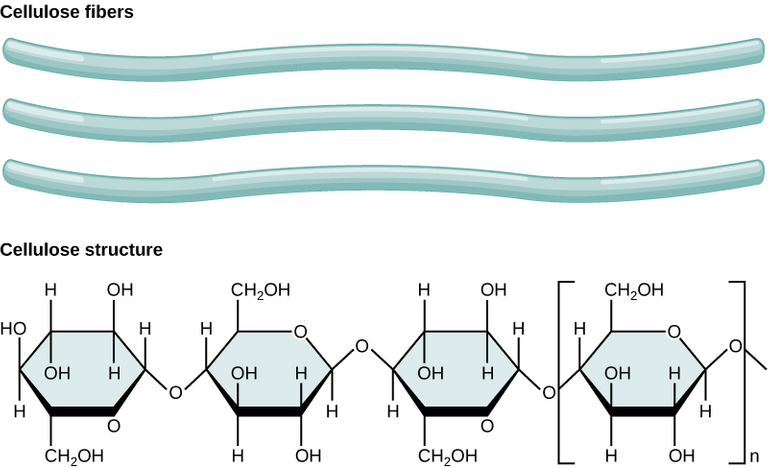Chemistry of carbohydrates- part two

From Wikipedia
Hello, buddies. You have reached yet another phase of my writing. This is the continuation of the topic I posted previously on carbohydrates, and I will proceed without much delay in discussing the structure and forms of carbohydrates.
The German chemist Emil Fischer conducted studies in the second half of the nineteenth century that demonstrated how simple changes to the spatial, or geometric, arrangements of molecules could produce isomers with the same molecular formulas but distinct structural arrangements and properties (such as fructose and glucose). Fischer's work uncovered that modifying the spatial arrangement of the relevant carbs results in the aforementioned isomers. Stereoisomerism, a form of isomerism, is present in every known living system.
In terms of carbohydrates, glyceraldehyde is the basic form. It is an aldose sugar with three carbons. If you break and re-make the bonds between the hydrogen (H) and hydroxyl (OH) groups affixed to the carbon (C) at position 2, you'll end up with two isomers of glyceraldehyde, which can be distinguished by the so-called Fischer projection formulas. Similar to how the right and left hands are mirror images of each other, isomers are also symmetrical in every other way. Enantiomorphism is a popular term for this type of isomerism. Except for the characteristic of optical rotation, which is different for each form of an enantiomer, all of their chemical and physical properties are identical.
When the plane of polarized light rotates, we say that an optical effect has taken place. Light that has been polarized has had its rays divided in such a way that they now travel at right angles to one another. Optically active solutions are those that contain substances that rotate the plane of polarization, and the degree to which this occurs is referred to as the optical rotation of the solution. Glyceraldehyde isomers share the same optical rotation magnitudes but opposing rotation directions. To put it another way, the plane of polarized light is rotated to the right in a D-(d)-glyceraldehyde solution and to the left in an L-(l)-glyceraldehyde solution.
Let's dissect carbohydrates and see their configuration.
The structures of asymmetric molecules allow for alternative arrangements of their constituent elements. Examples of such macromolecules include the glyceraldehyde isomers. The molecular diversity of an asymmetric molecule grows with the number of asymmetric centers present. It follows that the number of isomers for a molecule is 2n, where n is the number of chiral centers. An asymmetrical carbon center is a carbon atom that is surrounded by four distinct groups. Carbon fits this description precisely. The carbon atom in the heart of the molecule of the three-carbon aldose sugar glyceraldehyde acts as the asymmetrical center of the molecule.
Rotating the plane of polarized light to the left or right depends on whether the hydroxyl group (OH) attached to the center carbon atom protrudes to the left or right. The hydroxyl (OH) group is attached to the central carbon through a covalent connection. Glyceraldehyde has only one asymmetric center, so the number of n in the equation 2n is 1, implying that there are potentially two isomers of glyceraldehyde. Due to their two asymmetrical centers (22), sugar molecules containing four carbon atoms come in four distinct isomers. Carbohydrates with five carbon atoms have three asymmetrical nuclei and eight possible isomers (22*2). Keto sugars have fewer uneven centers per carbon atom than aldehyde sugars do.
According to a nomenclature guideline established in 1906, glyceraldehyde is said to be in the D-configuration when its asymmetric carbon atom and hydroxyl group point to the right and in the L-configuration when they point to the left. To be in the D-configuration, a sugar must be synthesized from D-glyceraldehyde. As a result, the hydroxyl group connected to the asymmetric carbon atom that is furthest from the aldehyde or keto end of the molecule protrudes to the right. L-configuration sugars are those that derive from L-glyceraldehyde.
Whether a sugar in solution spins optically clockwise or counterclockwise does not affect whether it is referred to as D or L configuration. That's why you'll often hear either D-(l)-fructose or D-(d)-glucose used. This implies that the center of asymmetry in both glucose and fructose is D-shaped, rather than being closer to the aldehyde or keto ends of the molecules. But glucose is dextrorotatory while fructose is levorotatory, which is why glucose is referred to as "dextro." Almost half a century of follow-up research confirmed that the initial configuration assignments for the glyceraldehydes were accurate in an absolute spatial sense. When it comes to biological functions, only the D or L version will do.
DL pairs can be found in sequence when a molecule has more than one irregular center, as in sugars with four or more carbon atoms. The functionality, appearance, and construction of each of these DL sets are distinct. Both D-xylose and D-lyxose have the D-configuration and five carbon atoms, but their asymmetric centers (at carbon atoms 2, 3, and 4) are not mirror images of each other.
Carbohydrates with a hemicetal or hemiketal composition
To determine the type of carbohydrate, optical spinning has been widely used since its discovery in the late 1800s. However, many sugar solutions exhibit distinct rotational behavior after sitting for a while compared to when they were first prepared. This is due to the fact that carbohydrates have a characteristic called optical rotation, which causes light to rotate counterclockwise when passing through them. Even when two sugars appear to be identical, this effect, termed mutarotation, can be observed. An asymmetrical center forms at the first carbon atom (the aldehyde carbon) in aldoses and the second carbon atom (the ketose carbon) in ketoses, causing this variety of stereoisomerism.
This means that open-chain, or linear, structures of pentose and hexose sugars do not appear in solution. Instead, they construct circular, or ring-shaped, hemiacetal or hemiketal structures. Carbonyl groups on the fourth, fifth, and sixth carbon atoms of carbs can be converted into cyclic structures by adding the hydroxyl group (OH), as demonstrated for glucose and fructose. Glucose and fructose are good examples of substances that undergo this transformation.
Either the first or second carbonyl group of a molecule of fructose or glucose is carbonyl. For circular ketohexose and aldohexose, both with five and six members, the cyclic forms are balanced by the open-chain structure. This indicates that the pace at which one form is transformed into another is constant. The open-chain composition is a free aldehyde or ketone, depending on whether or not the solution contains glucose or fructose.
Carbohydrate anomers are stereoisomers that only differ in the configuration of one carbon atom, and anomeric carbon is the carbon atom in a carbohydrate stereoisomer that includes an aldehyde or a keto group. The alpha anomer of a cyclic hemiacetal or hemiketal is the structure in which the newly formed hydroxyl group projects on the same side as that of the oxygen that was engaged in forming the ring. The beta anomer has the hydroxyl group extending away from the oxygen ring rather than toward it.
References
“Carbohydrates (Article) | Chemistry of Life | Khan Academy.” Khan Academy, www.khanacademy.org/science/ap-biology/chemistry-of-life/properties-structure-and-function-of-biological-macromolecules/a/carbohydrates.
“Carbohydrate - Role in Human Nutrition.” Encyclopedia Britannica, www.britannica.com/science/carbohydrate.
“Carbohydrates: MedlinePlus.” Carbohydrates: MedlinePlus, 17 Jan. 2022, medlineplus.gov/carbohydrates.html.
“Carbohydrates: Uses, Health Benefits, Nutrition, and Risks.” Carbohydrates: Uses, Health Benefits, Nutrition, and Risks, www.medicalnewstoday.com/articles/161547.
Migala, Jessica, and Kelly Kennedy RDN. “What Are Carbohydrates? Benefits, Functions, Best Sources, Diets, More.” EverydayHealth.com, 1 Mar. 2019, www.everydayhealth.com/carbohydrates/guide.
@ClevelandClinic. “Carbohydrates: Types and Health Benefits.” Cleveland Clinic, my.clevelandclinic.org/health/articles/15416-carbohydrates.
“The Functions of Carbohydrates in the Body.” The Functions of Carbohydrates in the Body | Eufic, 14 Jan. 2020, www.eufic.org/en/whats-in-food/article/the-basics-carbohydrates.
“Choose Your Carbs Wisely.” Mayo Clinic, 22 Mar. 2022, www.mayoclinic.org/healthy-lifestyle/nutrition-and-healthy-eating/in-depth/carbohydrates/art-20045705.


Carbohydrate is a complex structure, funny how we only think about its consumption and not the technicality behind the structure, appreciate the enlightenment buddy.
Good job on this one!
Thank you so much, buddy. Although I don't know the checker you'd use for your work, it is important to know that at times it may not be 100% correct, and in between, I was aspecting your support on this one. smile
Thanks for your contribution to the STEMsocial community. Feel free to join us on discord to get to know the rest of us!
Please consider delegating to the @stemsocial account (85% of the curation rewards are returned).
Thanks for including @stemsocial as a beneficiary, which gives you stronger support.